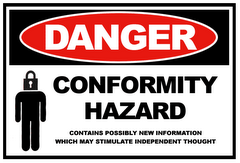Double the Risk Double the Reward?
If you have a profitable trading system or method that risks, say, 2% of capital per trade based on your entry price and stop loss and makes 30% per year, then why not double this risk level and make twice as much return per year? This seems like a good idea until you think about the fact that doubling the risk does not necessarily mean you will double the return. Why? Here are a couple of things to consider:
Increasing risk per trade increases the risk of total loss. Imagine if your risk was 50% per trade, you would only need to have 2 losing trades in a row to lose 75% of your capital. As your chances of total loss increase, this has the effect of reducing your average ending equity in a simulation of the possible returns from your system and means that doubling up on risk may not double the average return you get.
Winning and losing are not symmetrical. If you lose 50% of your capital you have to have a 100% gain to get back to where you started. If you lose 75% (as in the previous example) then you have to have a 400% gain just to get back to breakeven.
With these examples is obvious that simply increasing risk does not always have a corresponding increase in return, and at some point your risk of ruin goes up significantly – in same cases to almost a certainty. This means you are taking on extra risk to such an extent that you are almost guaranteeing you will lose your capital.
My advice would be to simulate your trading with gradually increasing position sizing and make sure that you are trading at a risk level that does have a corresponding increase in average return that you are comfortable with - otherwise you are simply taking on more risk with little to show for it.
Paul King
PMKing Trading LLC
www.pmkingtrading.com

No comments:
Post a Comment